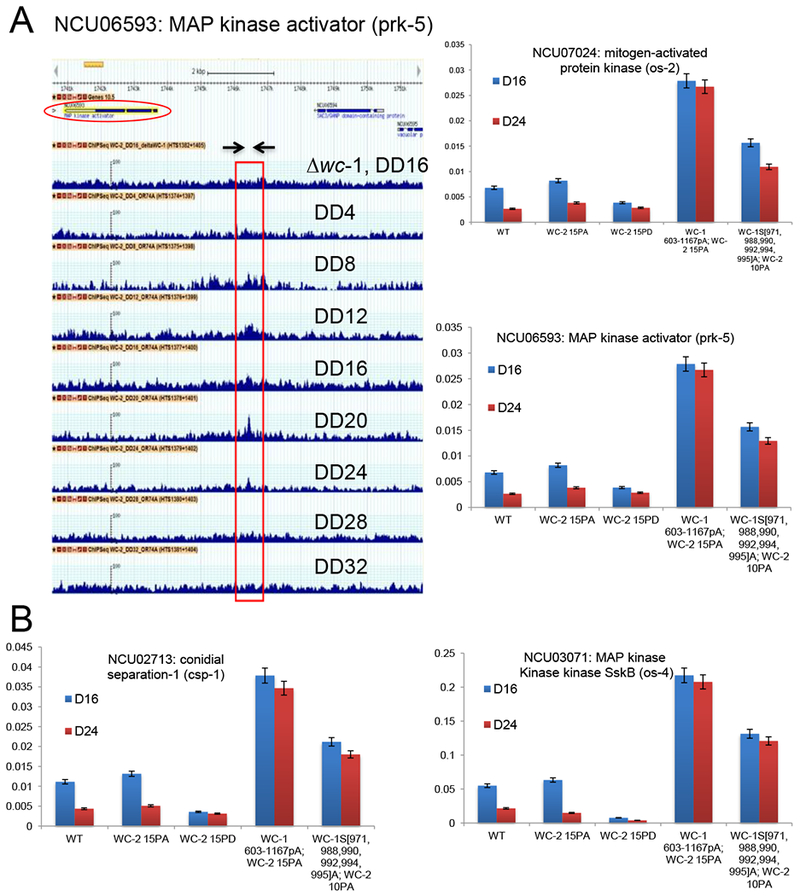Figure 6.

Mutations of phosphosites on the WCC that impact repression within the core oscillator also have direct effects on rhythmic binding to DNA targets in the first step of circadian output. A Identification of novel direct targets of the WCC. G-browse data for ncu06593 (encoding MAP kinase activator prk-5) from a series of ChIP-seq experiments using anti-WC-2. Top; gene map with the transcription unit circled. Below this are Δwc-1 (negative control for WCC binding) and WC-2 binding assessed at 4 hr intervals from DD4 to DD32. The peak of binding is marked by the box; arrows indicate the primer set (Table S5) used to detect the region. Right; ChIPqPCR data assessing WC-2 binding to this site and to the promoter of ncu07024, in WT and four mutants as shown, revealing that mutant strains that have lost circadian repression within the feedback loop are also altered for binding related to circadian output. Binding was assessed at DD16 (~CT4, subjective morning) and DD24 (~CT14, subjective evening). Error bars are SEMs (n=3). B Binding of WC-2 to two other direct targets of the WCC within the first step of circadian output in WT and mutants as shown. See Figure S9 for other examples of output genes.
